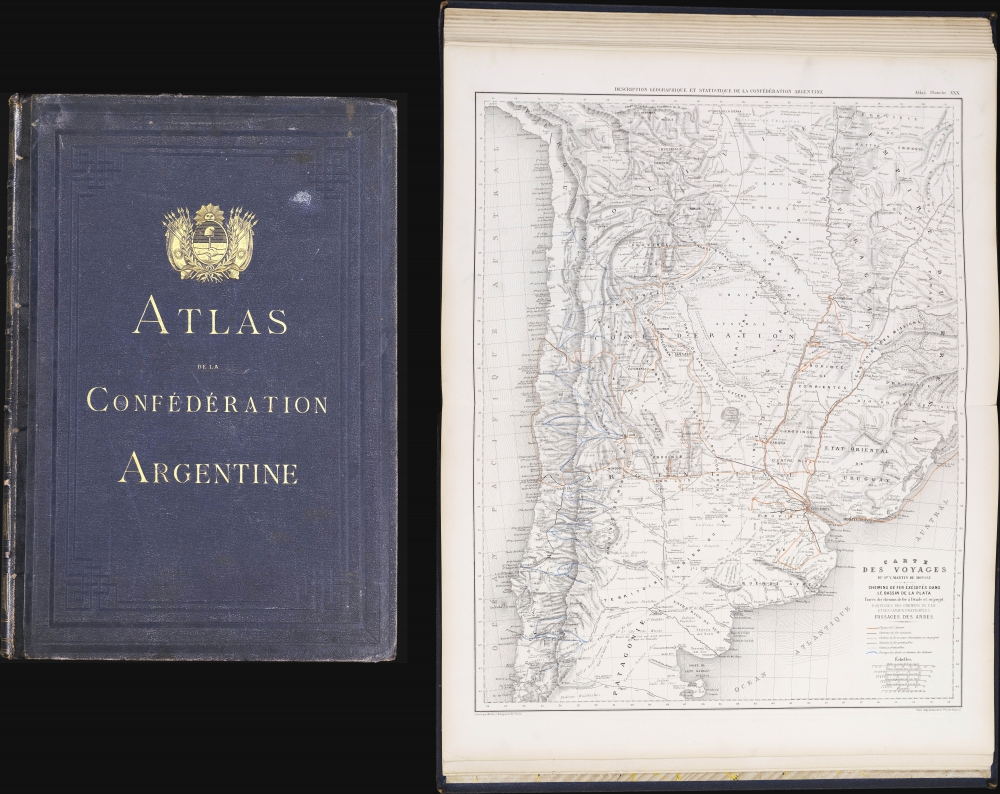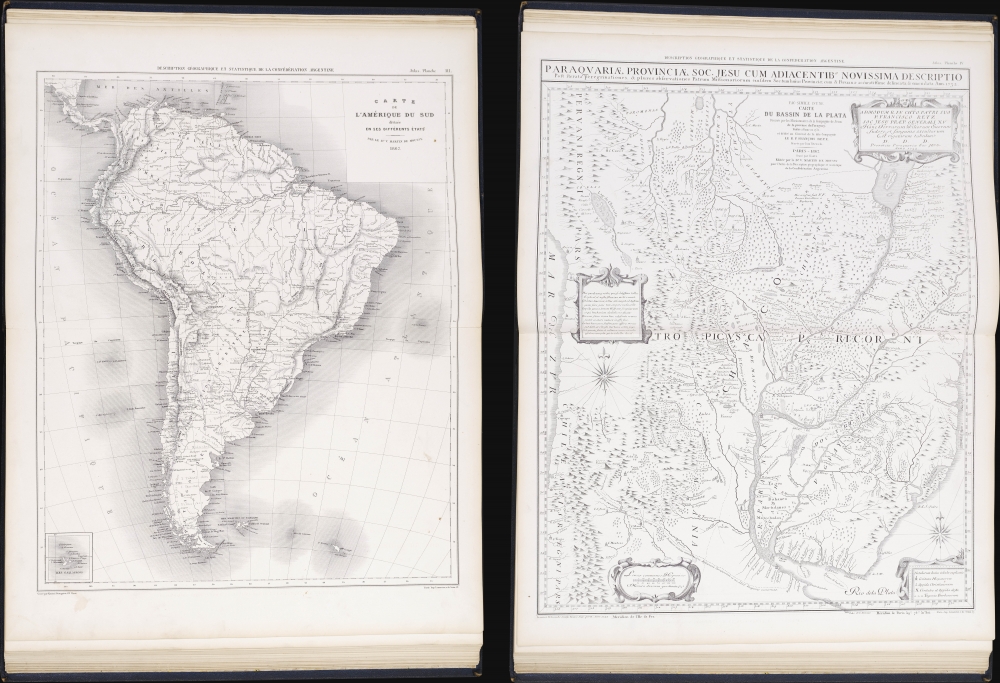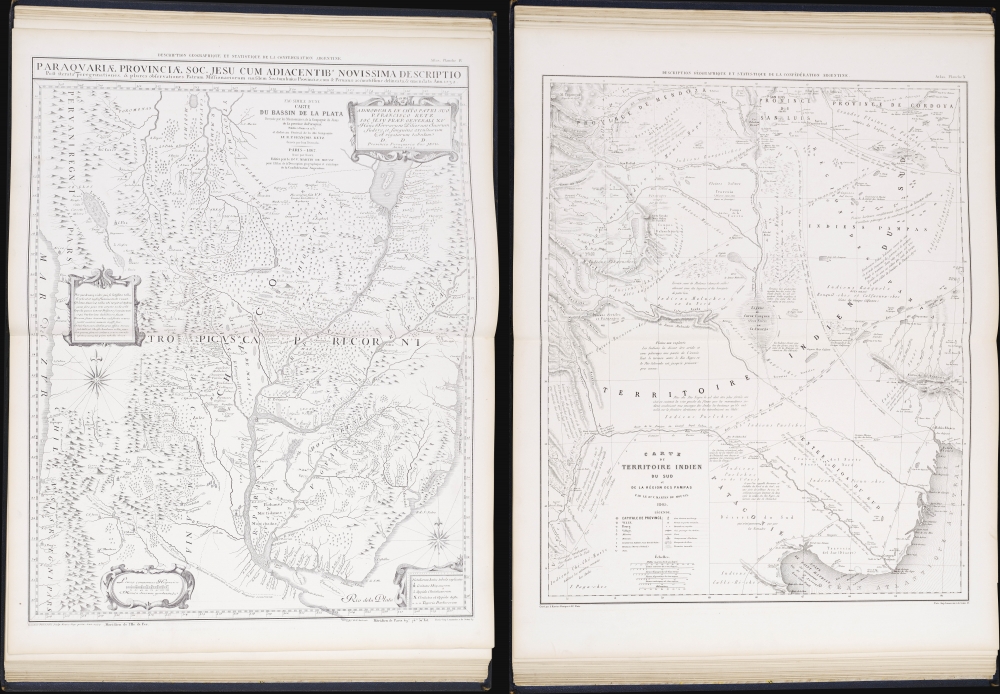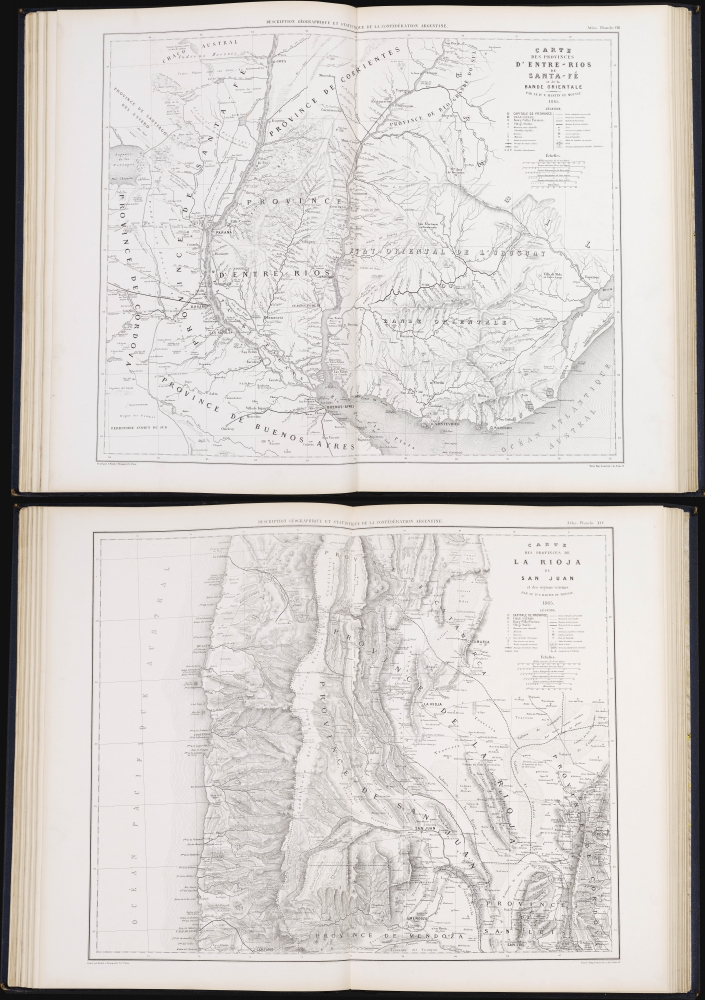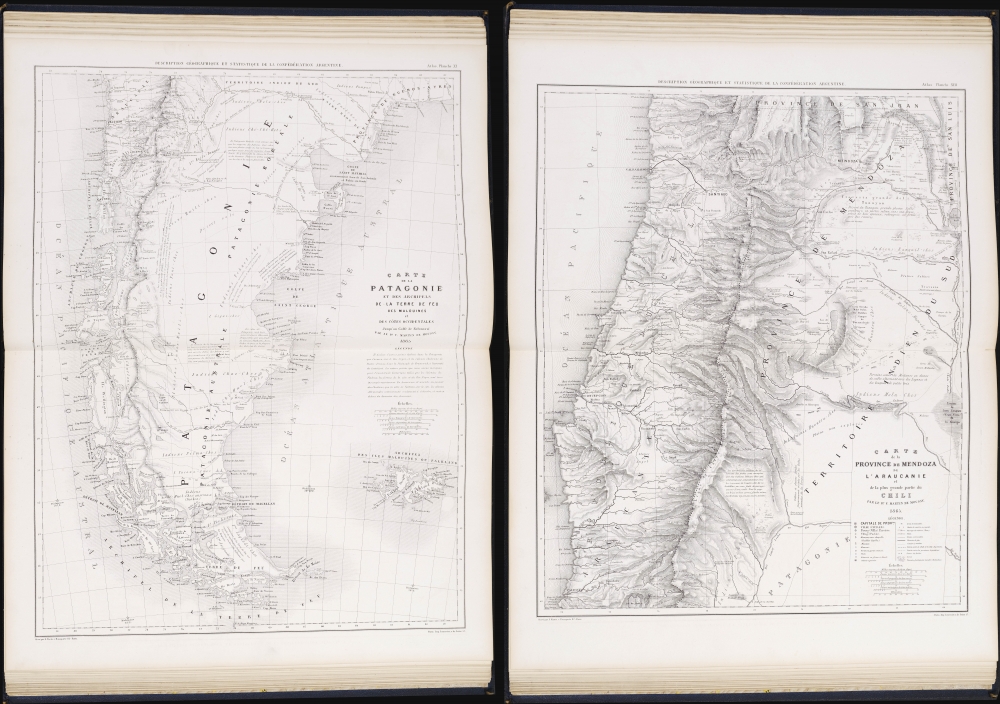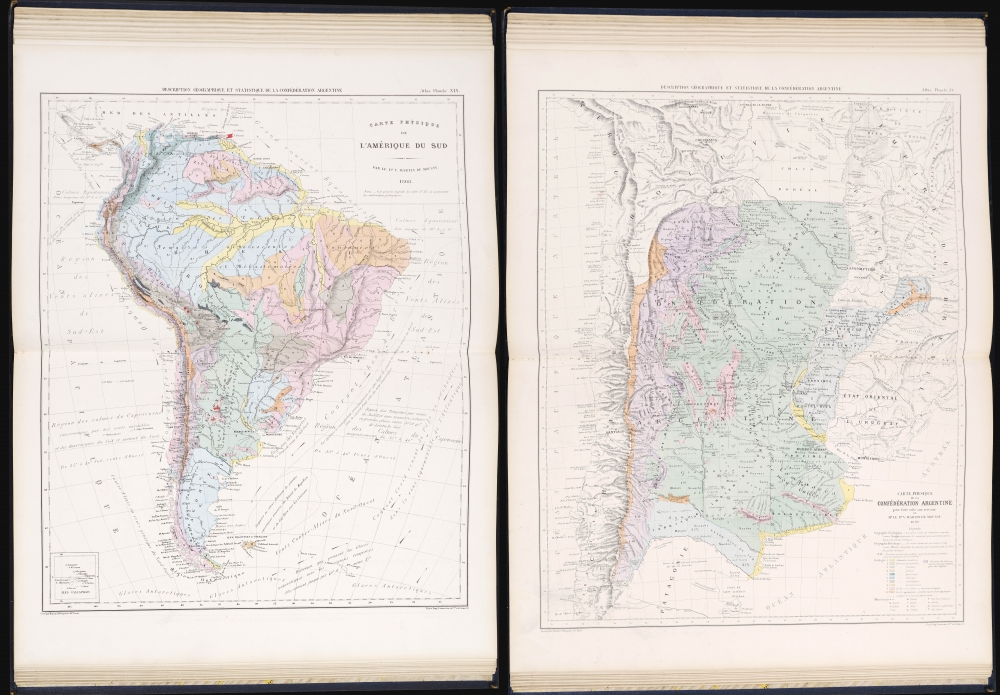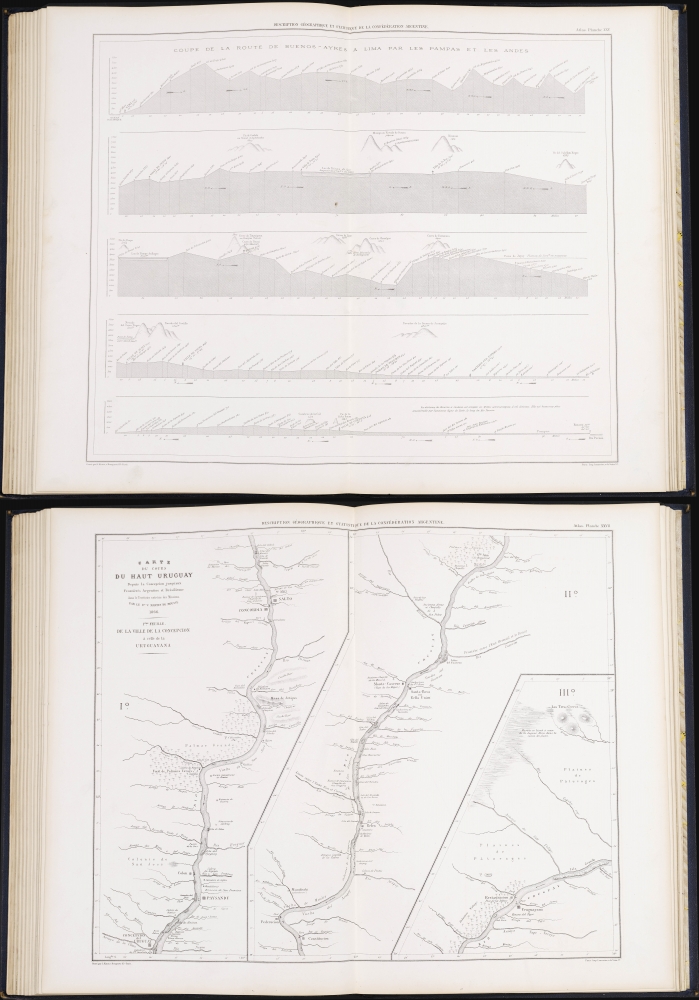This item has been sold, but you can get on the Waitlist to be notified if another example becomes available.
1873 Victor Martin de Moussy Atlas of the Argentine Confederation
ArgentineAtlas-moussy-1873
Title
1873 (dated) 19 x 13.25 in (48.26 x 33.655 cm)
Description
The First Atlas of the Argentine Confederation
In the wake of the Platine War (1851 - 1852), the Argentine Confederation entered a period of unification, coinciding with the rise of its new President, Justo José de Urquiza (1801 - 1870), who rose to power in 1854. Urquiza reached out to Moussy to serve as the official geographer on an expedition throughout the Confederation. Moussy had previously been directing the French Legion hospital and teaching at the medical school in Montevideo. His credentials from this work may have brought him to Urquiza's attention, but he also had served with the Argentine National Guard during the Platine War, and this connection may have aided him.The five-year project encompassed more than 20,000 kilometers, and not only covered the Confederation itself but also Paraguay, the Misiones, Chaco, Patagonia, Chile, southern Bolivia, and the Uruguay and Paraná rivers.
The results of the expedition were published in Paris, in three volumes published between 1860 and 1864. In 1869, this accompanying Atlas was published, with 29 plates comprising maps, profile diagrams of important routes across the country showing its drastically changing elevations, and maps detailing the courses of the Paraná and Uruguay Rivers. Among the notable maps is one detailing, in hand color, the routes Moussy took in traveling the Argentine Confederation and its borderlands.
Publication History and Census
The Atlas was first printed by Lemercier and published by Didot in Paris in 1869; this second edition, by the same publisher, was printed in 1873. The work is cataloged in perhaps a dozen institutional collections and is rare on the market.CartographerS
Victor Martin de Moussy (June 26, 1810 - March 26, 1869) was a French physician and author. In 1841 he emigrated to Rio de Janeiro, resettling to Montevideo in 1842, where he became successful in his vocation. He became rich enough to quit medicine, and became a patron of the sciences - he founded an astronomical observatory, which he donated to the city. For ten years the observatory operated with good results.
The 1846 siege of Montevideo by Rosas and Oribe led him to encourage the foundation of a foreign national guard: one French and the other Italian (and everyone else.) Martin served as physician of both legions, which mainly provided civil order during the war. The legions were dissolved with the 1852 peace. Following the war, Martin explored the Rio de la Plata on behalf of the Argentine government travelling from 1855 to 1858 surveying that river as well as the Uruguay, and Paraguay rivers. Ill health would send him back to France in 1859, where he would publish accounts of his travels, in particular his ten volume 'Description geographique et statistique de la confederation Argentine.' More by this mapmaker...
Rose-Joseph Lemercier (June 29, 1803 - 1887) was a French photographer, lithographer, and printer. One of the most important Parisian lithographers of the 19th century, Lemercier was born in Paris into a family of seventeen children. His father was a basket maker, and he even began working as a basket maker at the age of fifteen, but Lemercier was drawn to lithography and printing and soon entered into an apprenticeship with Langlumé, where he worked from 1822 until 1825. After working for a handful of other printers, Lemercier started his own firm in 1828 at 2, rue Pierre Sarrazin with only one printing press. He subsequently moved a few more times before arriving at 57, rue de Seine, where he founded the printing firm Lemercier and Company. He created the firm Lemercier, Bénard and Company in 1837 with Jean François Bénard. Lemercier bought out Bénard's share in the firm in 1843 and, since his two sons died at a young age, he decided to bring his nephew Alfred into the business beginning in 1862, who would progressively take on more and more responsibility in running the firm. Between 1850 and 1870, Lemercier's firm was the largest lithographic company in Paris. The firm began to decline in prestige in the early 1870s, and, after Lemercier's death in 1887, its descent only quickened. It is unclear when the firm closed, but Alfred directed the firm until his death in 1901. Learn More...

